Bombing of Nîmes: “It was Pentecost Saturday. When the sirens sounded at 10:05 a.m., the people of Nîmes did not expect it”
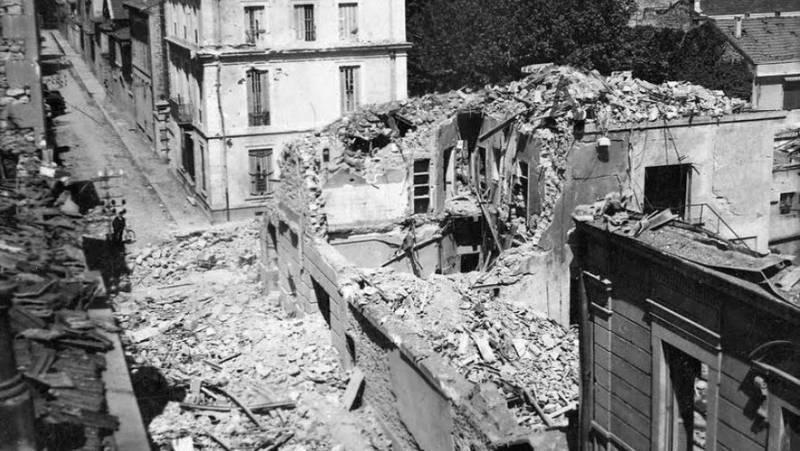
Des maisons détruites, rue Raymond-Marc.
The Association of Friends of the Foundation for the Memory of the Deportation presents a conference "The bombings of Nîmes" from 1944, by Francine Cabane, from the Academy of Nîmes, with the testimony of people who experienced the events or collected the memories of their families.
In what context did these bombings take place which affected Nîmes on May 27, 1944 ?
This happened within the framework of the liberation of France. There will be three bombings in total, on May 27, July 12 and August 23. The most important is that of May 27. They were programmed by the American and English allies to prepare for the landings in Normandy and Provence.
The idea is to block the occupying German troops, prevent them from moving and reaching the landing zones. It was a question of destroying bridges, marshalling yards, as much railway equipment as possible, locomotives and others, roads too, everything that was used to quickly move troops.
The objective was essentially strategic, not so much to target the Germans. Moreover, the bombing did not cause any German casualties in Nîmes. The places where they were installed were not targeted.
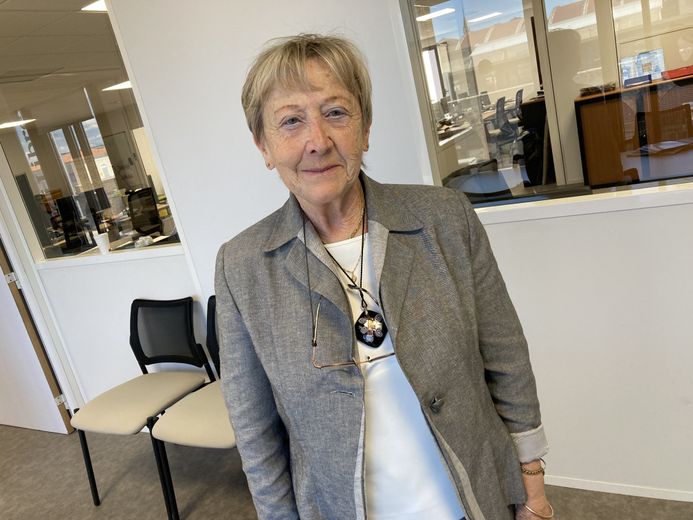
The historian Francine Cabane, member of the Academy of Nîmes.
At the time, the bombings were imprecise…
The planes left Italy, from the Foggia region, east of Naples where the Americans had set up several important airfields and assembled the 5th Army. 700 bombers left the same day, passing through Cape Corsica, supervised by fighter planes. The Americans chose to bomb by day and not by night, like the English. They bombed from very high, so as to avoid the German anti-aircraft defense which was very powerful. Nîmes was protected by anti-aircraft defense installed on the heights, notably on Mont Duplan.
The Americans choose to fly at very high altitudes. On May 27, 1944, there were four groups of aircraft, the height of which was between 6,000 and 7,000 meters.
The next two bombings were lower, with more precision of course, by the English. That of July 12 achieved strategic objectives and caused no deaths and a few injuries. The one on August 23 was done at night.
Very little is known about this latest bombing…
There is nothing in the archives. The newspapers of the time did not mention it because the news the next day, August 24, was the Liberation of Nîmes. When the newspapers reappeared, particularly Midi Libre on August 27, they only spoke of the Liberation, the parades and the popular jubilation . This bombing nevertheless had a significant impact on the evacuation of German troops from Nîmes, which was delayed.
How effective was the bombing of May 27 ?
There were four waves. It's the very last one, at 10:50 a.m., which affects more of the marshalling yard. But most of the targets had not been reached.
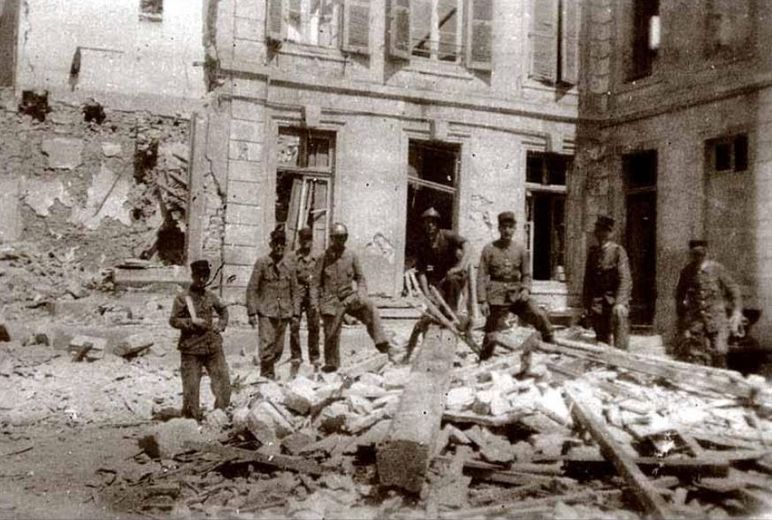
The fire station, rue Notre-Dame, near Place de l'Ecluse.
The event is remembered because of the number of victims…
The official figure, that of the prefecture, is 271 dead and 289 injured. There are 8 bodies that have never been found.
The Nîmes did not expect it. There had been a lot of warnings, leaflets from the American army sent to the cities saying that they were going to bomb strategic objectives. This May 27 is a Pentecost Saturday. The weather is very nice, families are preparing family meals. The big concern is finding sugar.
When the sirens sound at 10:05 a.m., many people do not go to the shelters. Some will join them, there were some at the arenas, Place du Chapter which had been dug and in all the cellars which had been indicated by the passive defense… Some will be stuck in cellars, under the rubble.
Courbessac was the target, where the other bombs fell?
The Nîmes station was also targeted, which is why bombs fell on the area of the prefecture and the Museum of Fine Arts. It was the depot, the rotunda, the marshalling yard that were targeted. The bombs did not have the expected precision and above all, there was a mistral that day. The pilots did not take the wind into account and when a bomb descends 6 kilometers, of course, it is deflected. This is the reason why so many bombs fall on the Richelieu district or on the hospital where there were 44 deaths, including 24 staff, doctors, nurses…
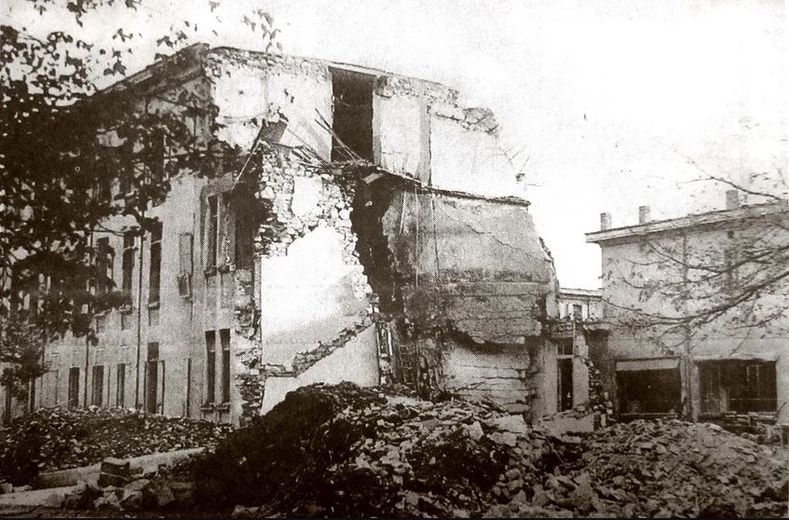
The surgical wing of the old hospital, where 44 people died.
There were 110 impacts. In total, around 500 bombs weighing 226 kilos, or more than 100 tonnes, were dropped. ;rsquo;authority of the Germans, several on Mont Duplan, a rue Notre-Dame…
How the population reacts?
The next day, the prefect's report says that the population is calm. People fled, many went to the masets, which was recommended since the start of the war in the event of bombings. Many did not come back down from the scrubland before the Liberation.
The population was literally destroyed, paralyzed, stunned. There was a strong mobilization to participate in the relief and the clearing, a strong emotion at the time of the funeral which took place the following Monday at the Protestant cemetery and at the Saint-Baudile cemetery.
This had consequences in terms of reconstruction which will take time. Some buildings are completely destroyed. On Boulevard Gambetta, the Saintot watchmaking building, opposite the Post Office, remained a gaping hole for a long time. It took at least five years for the reconstruction of all the military equipment, the rotunda, the train station… After the war, there were procedures because people were compensated, but with the money they received, they could not rebuild the houses to the standards of the 1950s.~60s~/p>
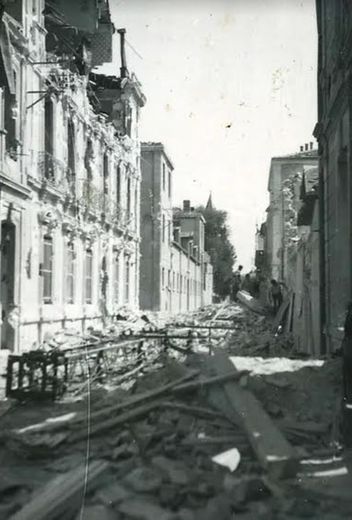
Rue Raymond-Marc, in the prefecture district.
For this conference, you have gathered witnesses…
It’s a bit complicated. At the Nîmes Academy, several people agreed to testify. I went to meet Robert Chalavet, a lawyer who is 95 years old and in his right mind, he told me his memories, in particular talking to me about the flight to the Masets. I'm going to interview the painter Gérard Lattier, whose railway worker father died in the bombings. I also recorded Claude Gaillard, the granddaughter of Henry Bauquier, the founder of the Musée du Vieux Nîmes, whose sister was killed in the bombings.
Charly Puech, also a member of the Academy, recounts the memories of his uncle, Colonel Jules Igolen, a soldier passionate about history. Anny Hermann lived in Gallargues-le-Montueux. From there, she saw the enormous cloud of dust which rose above Nîmes. She also remembers the little Nîmes children who arrived in their classes to finish the school year in the countryside, with their grandparents. Madeleine Giacomoni was born at that time, she left the maternity ward on the day of the bombing and it was her parents who told her about it. Lucien Peytier remembers seeing the procession of coffins leaving on Monday for the city's cemeteries.
Jean-Marc Canonge, who was principal at Feuchères college, comes to testify about his childhood memories, in particular of going to the shelters. Camille Lapierre will talk about the bombing of the hospital.
At the same time, other towns in the region were bombed…
Yes, the day before and the same day. The day before, there was a significant wave in Nice and other cities, such as Lyon. The same day, there is Avignon, Montpellier.
Monday May 27, 11 a.m., meditation in front of the plaque in the hall of the town hall. Tuesday May 28, 6 p.m., conference by Francine Cabane, followed by testimonies at the Jacques-Terrisse room, Daudet high school, boulevard Victor-Hugo, Nîmes. Free entry. Photos collections Philippe Ritter, Georges Mathon and Lucette Meuvret. I subscribe to read more




